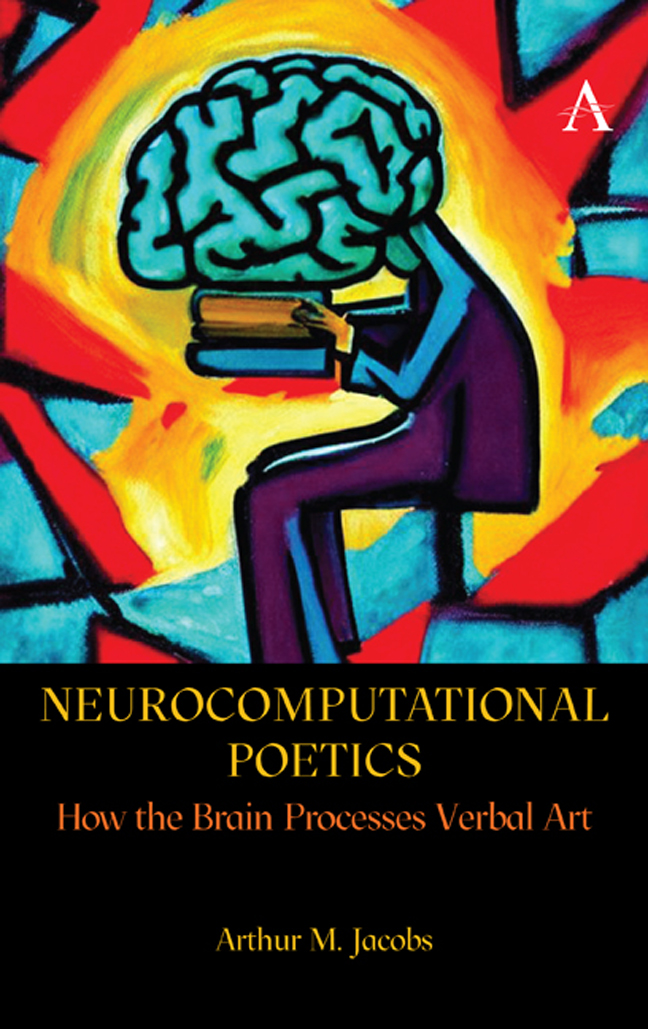Book contents
- Frontmatter
- Contents
- Acknowledgements
- Dedication
- Preface
- 1 Introduction: The Two Boons of an Unnatural Daily Activity
- 2 Models and Methods
- 3 Text Analysis
- 4 Reader and Reading Act Analysis
- 5 Computational Poetics I: Simple Applications
- 6 Computational Poetics II: Sophisticated Applications
- 7 Neurocomputational Poetics I: Upper Route Studies
- 8 Neurocomputational Poetics II: Lower Route Studies
- 9 Conclusions
- References
- Index
1 - Introduction: The Two Boons of an Unnatural Daily Activity
Published online by Cambridge University Press: 01 March 2024
- Frontmatter
- Contents
- Acknowledgements
- Dedication
- Preface
- 1 Introduction: The Two Boons of an Unnatural Daily Activity
- 2 Models and Methods
- 3 Text Analysis
- 4 Reader and Reading Act Analysis
- 5 Computational Poetics I: Simple Applications
- 6 Computational Poetics II: Sophisticated Applications
- 7 Neurocomputational Poetics I: Upper Route Studies
- 8 Neurocomputational Poetics II: Lower Route Studies
- 9 Conclusions
- References
- Index
Summary
Can you put into words your experiences while you sit on a couch and move your eyes smoothly across a piece of paper or a screen, which – as the only sensory input your brain has to process – provides some ink blobs or pixels you have learned to identify as letters after years of training? The following two quotes nicely summarize what I think is essential about this, in terms of evolution, most unnatural daily activity of the mind. They reveal two different aspects or functions that you perhaps are also familiar with. One evokes experiences of immersing oneself in a textual world; the other stirs up emotions and feelings of beauty. Both, the immersive and the aesthetic experiences, so well described in these citations, emerge from an interaction between the contents of the texts they read and the associative semantic networks in their brains.
A) ‘It starts spontaneously, and it keeps on as long as I keep reading. […] I have to concentrate and get involved. […] I immediately immerse myself in the reading, and the problems I usually worry about disappear. […] It starts as soon as something attracts my attention particularly, something that interests me. […] It can start wherever there is a chance to read undisturbed. […] One feels well, quiet, peaceful. […] I feel as if I belonged completely in the situation described in the book. […] I identify with the characters, and take part in what I am reading. […] I feel like I have the book stored in my mind.’
B) ‘It is emotion put into measure. The emotion must come by nature, but the measure can be acquired by art. It should surprise by a fine excess and not by singularity – it should strike the reader as a wording of his own highest thoughts, and appear almost a remembrance. It lifts the veil from the hidden beauty of the world, and makes familiar objects be as if they were not familiar‘. I would define it as the rhythmical creation of beauty.’
Throughout this book, I will treat these two aspects apart: immersion, mainly associated with the reading of prose, and aesthetic feelings, most often associated with the reading of poetry. This does not mean, however, that people cannot have aesthetic feelings when reading a novel or immersive experiences during the reception of poetry.
Information
- Type
- Chapter
- Information
- Neurocomputational PoeticsHow the Brain Processes Verbal Art, pp. 1 - 16Publisher: Anthem PressPrint publication year: 2023
